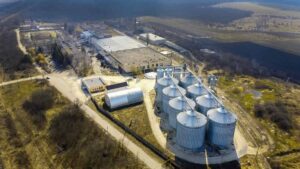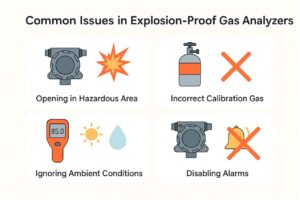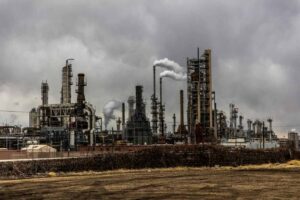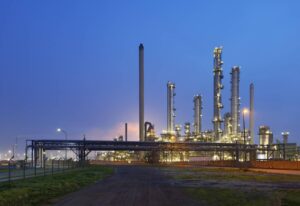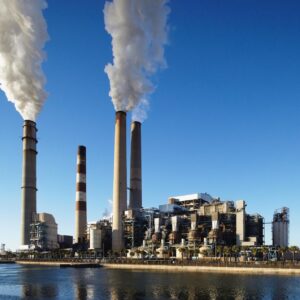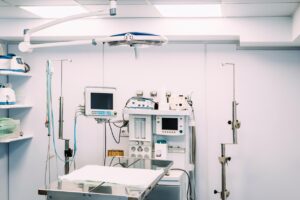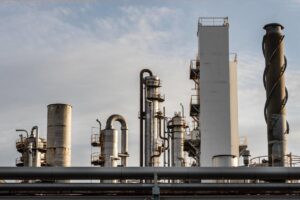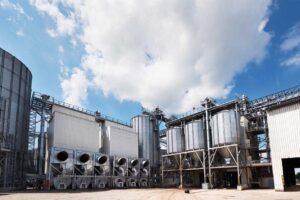Dangerous gases don’t give second chances—how can industries monitor them safely without risking explosions? An Explosion-Proof Gas Analyzer is engineered to operate in hazardous environments with flammable gases, preventing ignition while delivering precise gas monitoring. This makes it indispensable for industrial safety, risk mitigation, and regulatory compliance across high-risk sectors.
Why is an Explosion-Proof Gas Analyzer Essential in the Petrochemical Industry?
Volatile gases are ever-present in petrochemical operations. Agitation: Even a minor leak of hydrocarbon gases can lead to catastrophic explosions. Solution: Reliable, certified gas analyzers serve as early warning systems.

In petrochemical facilities, the risk of fire or explosion is ever-present due to the processing and handling of combustible substances like methane, ethylene, hydrogen, and benzene. These gases can accumulate undetected in enclosed spaces or during transfer processes, particularly in high-temperature or high-pressure systems. An Explosion-Proof Gas Analyzer allows for continuous and precise monitoring of these gases, even in ATEX Zone 1 or Zone 2 areas, where explosive atmospheres are likely. The rugged design of these analyzers ensures that the internal electronics cannot act as a source of ignition, which is vital in environments like refineries, cracking units, and gas storage terminals. Their integration into DCS or SCADA systems allows automated emergency shutdown procedures if gas concentrations exceed preset thresholds. Without this layer of protection, both workers and infrastructure are at constant risk.
Why Does the Pharmaceutical Sector Rely on Explosion-Proof Detection?
Volatile solvent vapors are a silent hazard in drug production. Agitation: Cleanrooms and enclosed spaces amplify explosion risks. Solution: Explosion-proof analyzers ensure safety without compromising operational hygiene.
The pharmaceutical industry might not seem as dangerous as oil and gas at first glance, but many drug manufacturing processes involve hazardous chemicals, including acetone, ethanol, isopropanol, and other volatile organic compounds (VOCs). These solvents can vaporize into the air, especially during mixing, purification, or cleaning stages. Even trace amounts of these vapors in the air, combined with static electricity or heat, can cause explosions.

An Explosion-Proof Gas Analyzer tailored for pharma settings is typically designed to operate within cleanroom conditions without interfering with air quality or particle count standards. They detect VOC levels in real-time, allowing for immediate ventilation adjustments and alarm activation. This monitoring is essential not only for safety but also for regulatory compliance with OSHA, GMP, and ICH Q9 quality risk management guidelines. Moreover, analyzers used in this sector must also be resistant to frequent cleaning protocols and chemical exposure—requirements that explosion-proof models meet by design.
What Role Does It Play in Landfills and Biogas Plants?
Naturally occurring gases like methane are highly combustible. Agitation: Without detection, these gases can accumulate and ignite unexpectedly. Solution: Continuous gas analysis enables energy recovery while managing risk.
Landfills and biogas plants are environments where biological decomposition of organic waste releases methane (CH₄), carbon dioxide (CO₂), and hydrogen sulfide (H₂S). While methane is a valuable energy source, it is also one of the most flammable and explosive gases. H₂S, on the other hand, is both toxic and corrosive. These gases can seep into confined collection areas or form combustible clouds above open digesters or pits.
An Explosion-Proof Gas Analyzer plays a crucial dual role here: ensuring safety and optimizing energy recovery. It provides continuous monitoring of methane concentration for safe harvesting and usage as fuel. At the same time, it detects any abnormal build-ups of gas that could signal blockages, leaks, or mechanical failures. These analyzers are often deployed directly within gas ducts, flare systems, or near compressors, where ATEX or IECEx certification is mandatory. By integrating gas analysis into the process control, plant operators can reduce unplanned downtime and extend equipment lifespan.
How Does It Ensure Safety on Ships and Offshore Platforms?
Confined, volatile environments are highly prone to undetected leaks. Agitation: A small spark in such settings can endanger the entire vessel or platform. Solution: Marine-rated explosion-proof analyzers provide non-stop protection.
Oil tankers, chemical transport ships, and offshore drilling rigs are some of the most challenging environments for gas detection. They feature confined spaces like engine rooms, fuel tanks, pump rooms, and drilling compartments where flammable gases may accumulate. Given the constant motion, humidity, salt exposure, and temperature fluctuations, equipment used in these settings must be built to withstand extreme environmental conditions.
An Explosion-Proof Gas Analyzer for maritime applications is designed with corrosion-resistant housings, vibration-proof mounts, and advanced compensation algorithms to maintain accuracy at sea. These devices are frequently paired with ventilation control systems and integrated into emergency shutdown procedures. On offshore platforms, gas detection is mandatory for wellheads, mud processing units, and flare stacks. Without this detection, leaks could go unnoticed until it’s too late, especially in areas where human access is limited or dangerous.
Is There a Use Case in Battery Manufacturing or Energy Storage Facilities?
Electrolyte gases are invisible but highly reactive. Agitation: They can escape during production or thermal runaway, posing explosion risks. Solution: Sensitive explosion-proof analyzers detect early warning signs.
As the world transitions to renewable energy, large-scale lithium-ion battery production and storage are becoming central to energy infrastructure. However, batteries—especially during charging, discharging, or thermal runaway—can release flammable gases such as ethylene, dimethyl carbonate, or hydrogen. These gases, when confined in enclosed rooms or storage containers, can ignite with little provocation.
An Explosion-Proof Gas Analyzer used in these settings must have ultra-low detection thresholds and fast response times. During battery production, especially in electrode coating and electrolyte filling stages, analyzers detect volatile organic compounds to ensure safe process conditions. In energy storage facilities, fixed analyzers are installed within battery enclosures or control rooms to monitor off-gassing, allowing for preemptive action like venting or system shutdown. Their deployment is crucial for both worker safety and preventing catastrophic energy system failures.
Which ESEGAS Products Support Explosion-Proof Applications in Industrial Settings?
Choosing the right analyzer for explosive or corrosive environments can be overwhelming. Agitation: Not all devices are built to withstand industrial stress or ensure explosion protection. Solution: ESEGAS offers application-specific analyzers tailored for hazardous zones.
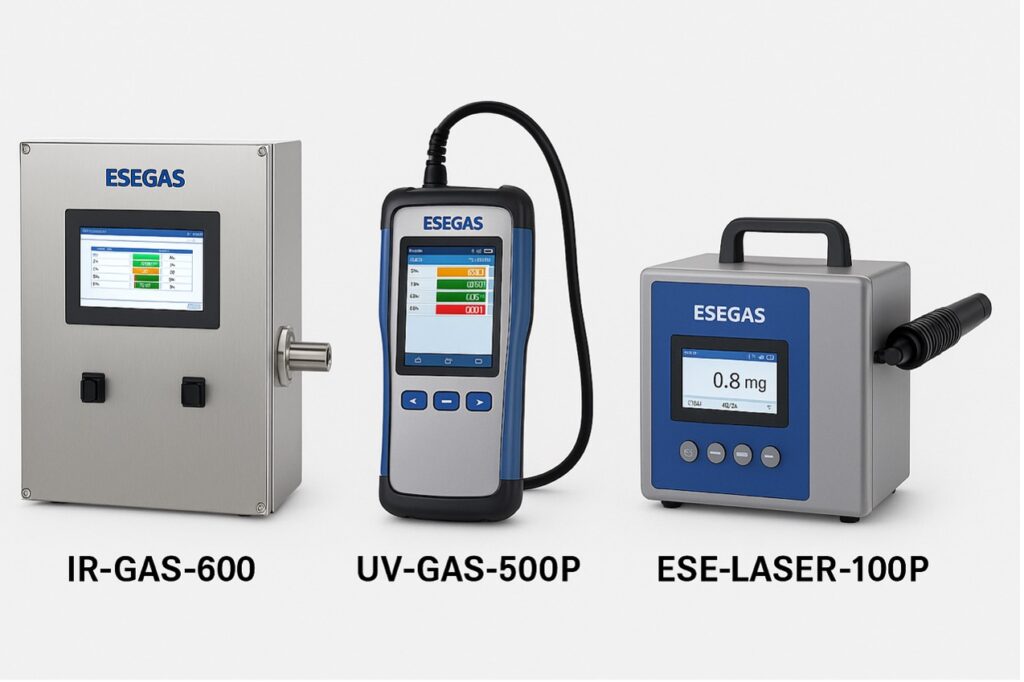
ESEGAS provides a comprehensive portfolio of high-performance gas analyzers designed for use in both fixed and portable configurations, with options well-suited for Explosion-Proof Gas Analyzer requirements. For instance, the IR-GAS-600 is an online process gas analyzer that supports continuous monitoring of CO, CO₂, CH₄, H₂, and O₂using advanced sensor technologies like NDIR and electrochemical cells. Its rugged construction and industrial-grade design make it ideal for syngas processing, flare systems, and petrochemical environments requiring ATEX-compliant detection systems.
For portable field use, ESEGAS offers the UV-GAS-500P, a compact analyzer based on UV-DOAS technology, capable of accurately measuring SO₂, NOx, CO, and other key combustion gases in emission control or maintenance tasks. Additionally, the ESE-LASER-100P, a TDLAS-based laser analyzer, excels in environments with high dust or moisture levels, such as cement plants or biomass facilities, offering rapid detection of NH₃, H₂S, and CH₄ without interference from other gases.
These analyzers demonstrate how ESEGAS bridges the gap between lab-grade accuracy and field-ready resilience. By deploying such tools, operators can ensure regulatory compliance, operational efficiency, and—most importantly—personnel safety in explosive or high-risk industrial environments.
| Model | Detection Principle | Target Gases | Typical Applications | Key Features |
| IR-GAS-600 | NDIR, TCD, Electrochemical | CO, CO₂, CH₄, H₂, O₂ | Petrochemical, Syngas, Flare Gas, Waste Incineration | Stainless steel housing, online process monitoring, ATEX ready |
| UV-GAS-500P | UV-DOAS + NDIR | SO₂, NO, NO₂, CO, CO₂, O₂ | Emission testing, Boiler exhaust, On-site audits | Portable, multi-gas detection, touchscreen, internal pump |
| ESE-LASER-100P | TDLAS (Laser Spectroscopy) | NH₃, H₂S, CH₄, CO, CO₂ | Cement plants, WtE plants, Biogas, Fertilizer units | Laser-based high selectivity, low interference, fast response, portable design |
Conclusion
An Explosion-Proof Gas Analyzer isn’t just a piece of safety equipment—it’s a vital control layer embedded in some of the world’s most dangerous and high-value industrial processes. From petrochemical plants to battery storage hubs, these analyzers provide continuous protection, regulatory assurance, and peace of mind in environments where the cost of failure is measured in lives and millions of dollars.







